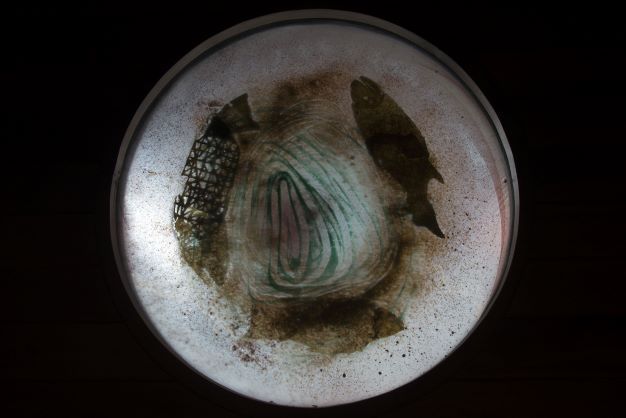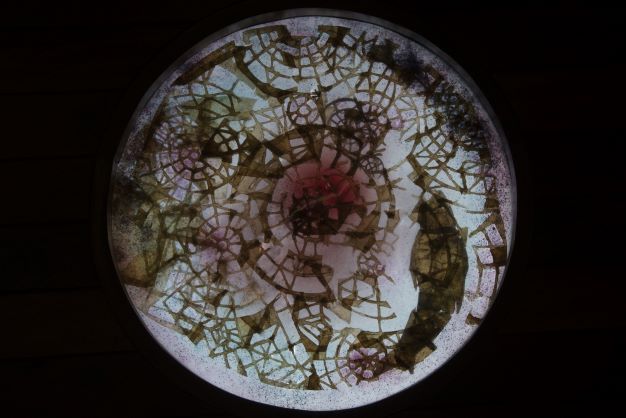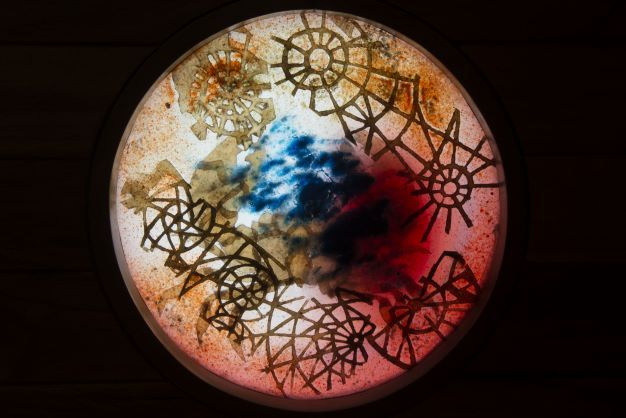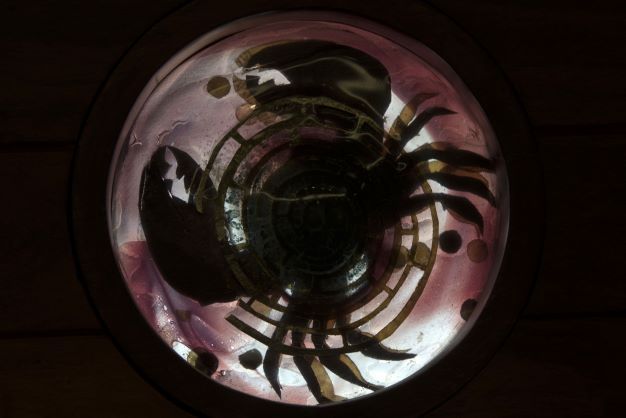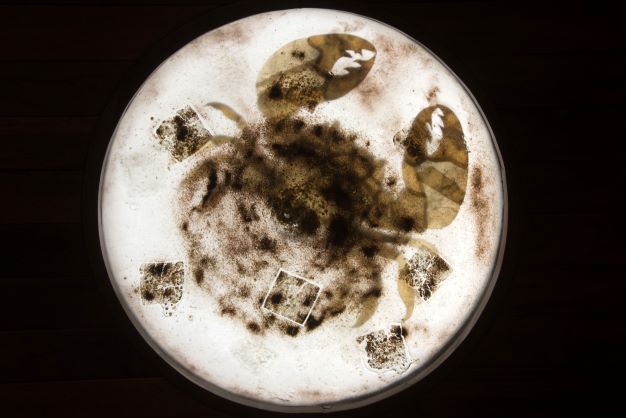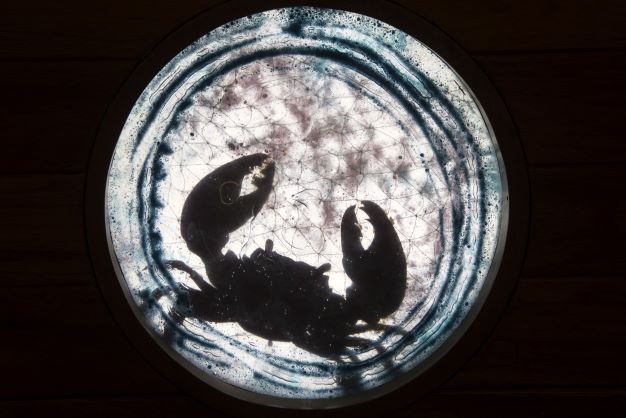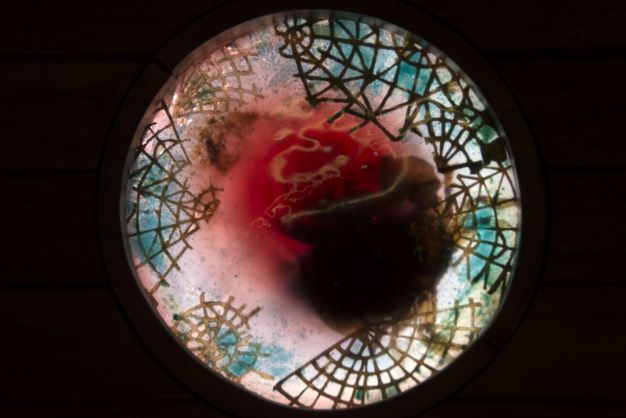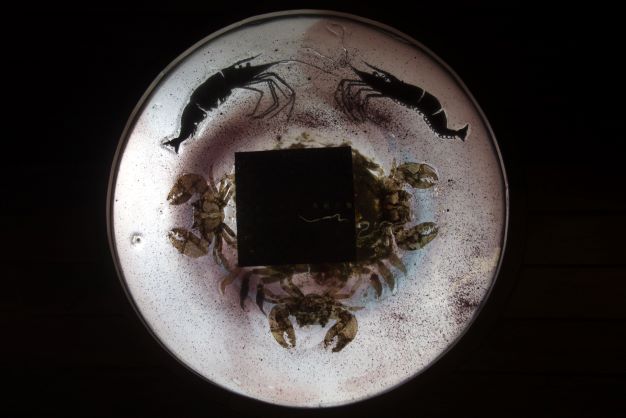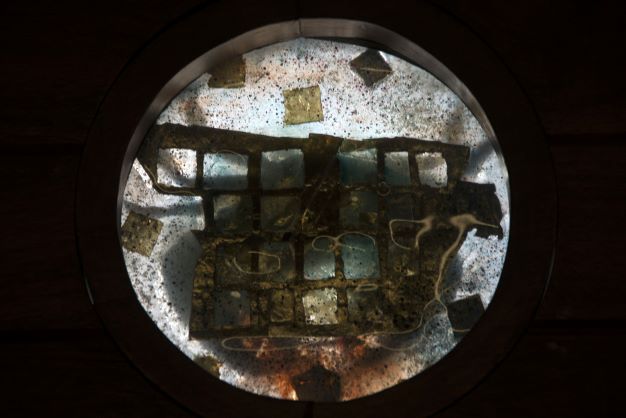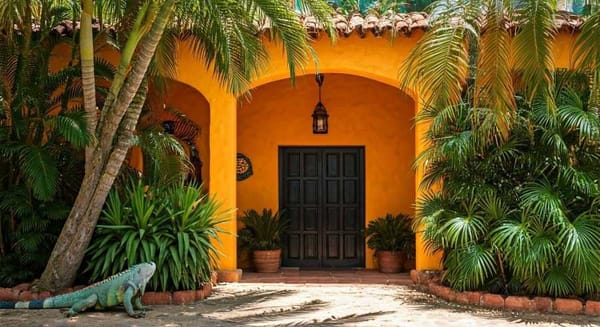Daily use aesthetics of mural-vitral by Francisco Toledo
This work by Francisco Toledo doesn't have a name, and it is made up of 13 round stained glass pieces of different sizes that are set into the two-leaf gate, which also serves as the facade, so that it can be seen both from the outside and the inside.

In the last decades of his life, the Mexican plastic artist Francisco Toledo (1940-2019) dedicated a good part of his intense artistic activity to making works that can be catalogued within what is known as applied arts, that is, those that incorporate aesthetics and creativity to objects of daily use (even playful), as opposed to fine arts, whose primary objective is to intellectually stimulate the spectator.
In some cases, the painter, draftsman, sculptor, ceramist, and printer born in Juchitán de Zaragoza, Oaxaca, gave himself to the making of these works to revitalize some industries linked to certain crafts and, in other cases, because he felt the need to explore new forms of expression.
"That was how he created, among other things, ceramic and felt pieces, carpets, floors with cement tiles and works with Chinese paper, such as his famous 43 kites illustrated with the face of each of the students of the "Raúl Isidro Burgos" Rural Normal School of Ayotzinapa, who disappeared on September 26, 2014, in Iguala, Guerrero," says Cuauhtémoc Medina González, a researcher at the Institute of Aesthetic Research and chief curator of the University Museum of Contemporary Art (MUAC).
However, Toledo also executed commissioned works. One of them is the mural-vitral that is in the Auditorio Maestro Jesús Silva Herzog of the Postgraduate building of the Faculty of Economics of the UNAM (which, by the way, was financed and donated by the banker Carlos Abedrop Dávila, who in his youth studied at the then National School of Economics).
"Toledo did it at the request of the renowned Mexican architect Ricardo Legorreta, author of that building of more than five thousand square meters built in the southern area of Ciudad Universitaria, next to Insurgentes Avenue, and inaugurated on August 30, 2010," reports Medina Gonzalez.
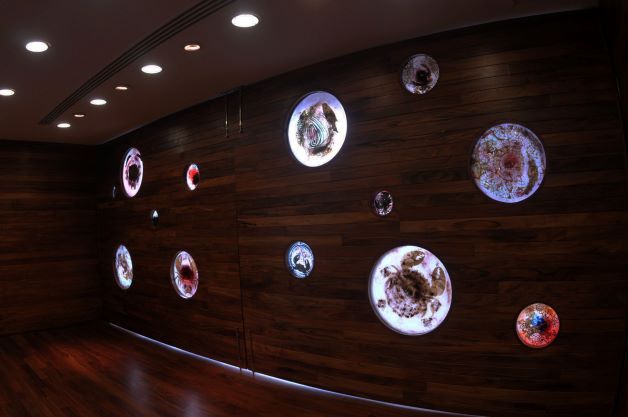
Mural-vitral by Francisco Toledo with natural mica
This work, which, as far as is known, has no title, consists of 13 round stained glass of different diameters, embedded in the two-leaf gate that also serves as the facade of the Auditorium Maestro Jesus Silva Herzog, so it can be seen from both the outside and from the inside of it.
Inside these stained glass windows that resemble coins, encapsulated, colorful figures of various inhabitants of Toledo's universe can be seen, made with natural mica: insects, fish, shrimp..., but especially crabs.
"Apparently, according to what one of Toledo's daughters reported to me, in the isthmus of Tehuantepec, crabs are identified with those who profit and with the greedy," says Medina Gonzalez.
After this mural-vitral, made with the collaboration of a traditional stained-glass window of San Agustín Etla, Toledo made, in 2011, a cross-shaped stained-glass window in the San Pablo Cultural Center, in Oaxaca.
